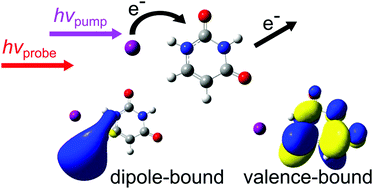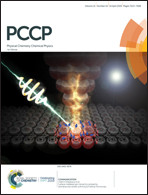Time-resolved radiation chemistry: femtosecond photoelectron spectroscopy of electron attachment and photodissociation dynamics in iodide–nucleobase clusters
Abstract
Iodide–nucleobase (I−·N) clusters studied by time-resolved photoelectron spectroscopy (TRPES) are an opportune model system for examining radiative damage of DNA induced by low-energy electrons. By initiating charge transfer from iodide to the nucleobase and following the dynamics of the resulting transient negative ions (TNIs) with femtosecond time resolution, TRPES provides a novel window into the chemistry triggered by the attachment of low-energy electrons to nucleobases. In this Perspective, we examine and compare the dynamics of electron attachment, autodetachment, and photodissociation in a variety of I−·N clusters, including iodide–uracil (I−·U), iodide–thymine (I−·T), iodide–uracil–water (I−·U·H2O), and iodide–adenine (I−·A), to develop a more unified representation of our understanding of nucleobase TNIs. The experiments probe whether dipole-bound or valence-bound TNIs are formed initially and the subsequent time evolution of these species. We also provide an outlook for forthcoming applications of TRPES to larger iodide-containing complexes to enable the further investigation of microhydration dynamics in nucleobases, as well as electron attachment and photodissociation in more complex nucleic acid constituents.

- This article is part of the themed collection: 2019 PCCP HOT Articles


 Please wait while we load your content...
Please wait while we load your content...